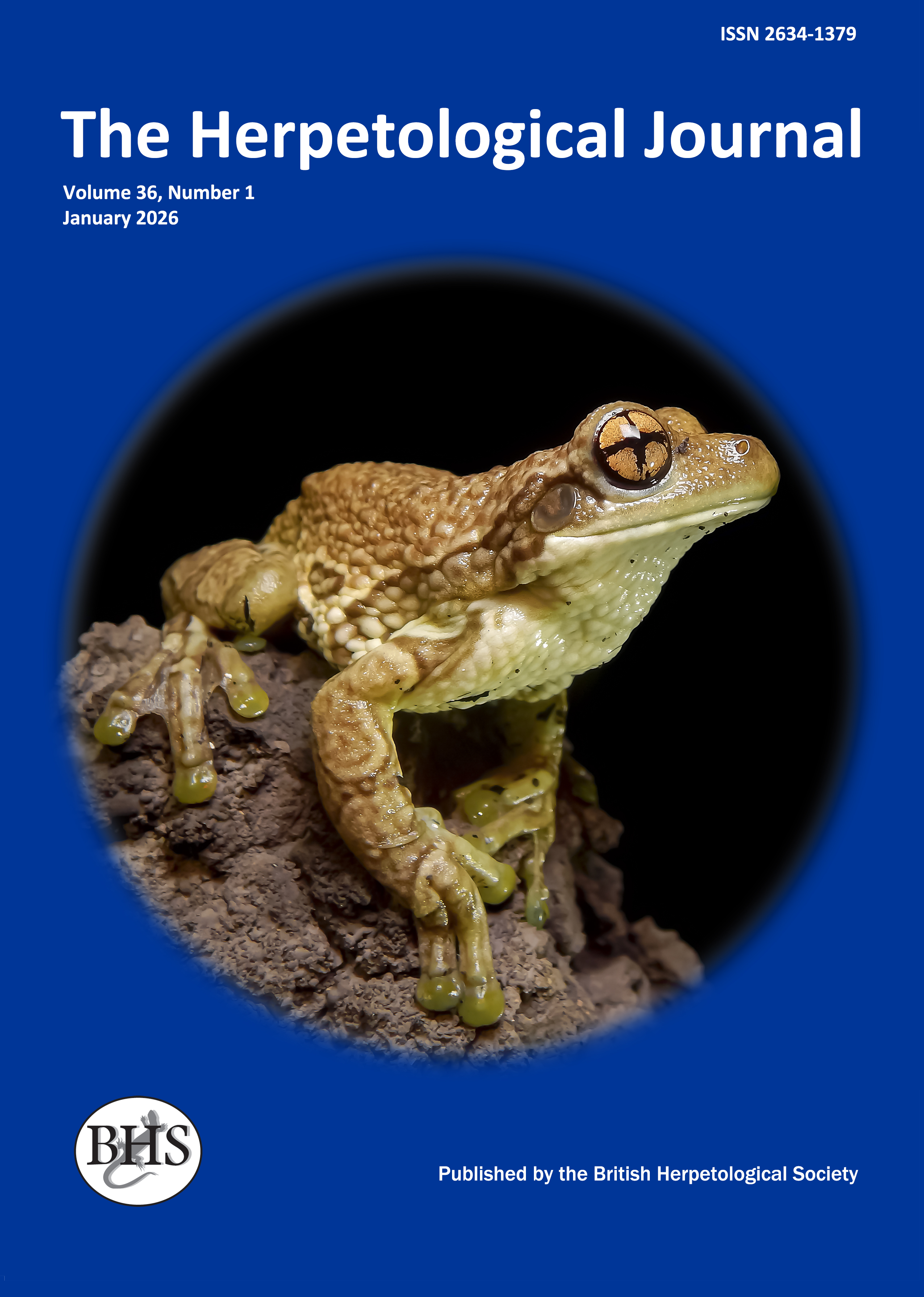
The Herpetological Journal
The Herpetological Journal is the Society's prestigious quarterly scientific journal. Articles are listed in Biological Abstracts, Current Awareness in Biological Sciences,Current Contents, Science Citation Index, and Zoological Record.
ISSN 0268-0130
2023 Impact Factor for the Herpetological Journal is 1.1, with the Journal sitting just below Quartile 2 in Zoology, at percentile 46.9
pdf 05. Conservation implications of the age/size distribution of Giant Bullfrogs (Pyxicephalus adspersus) at three peri-urban breeding sites
1631 downloads
Open Access
pp. 23-32
Authors: Yetman, Caroline A.; Mokonoto, Peter J. & Ferguson, Willem H.
Abstract: Nothing is known about the age of wild Giant Bullfrogs (Pyxicephalus adspersus); yet this information has important conservation implications for this regionally threatened species. We quantified and compared the age, body size and body condition of adult male and female P. adspersus caught during spawning events at peri-urban breeding sites in Diepsloot and at Glen Austin and Bullfrog pans in Gauteng Province, South Africa. Age was estimated from lines of arrested growth (LAG) counted in cross-sections of animal phalanges. Males and females from all three sites possessed 6±2 (max. 16) and 4±1 (max. 11) LAG, respectively, suggesting shorter female longevity. Individuals with <3 LAG were not encountered at the breed ing sites, implying that newly metamorphosed P. adspersus require at least three years to reach sexual maturity. There was no significant difference in the LAG counts of same-sex animals between the three sites. However, mean male snout-vent length, mass, and body condition was greatest at Glen Austin Pan, and lowest at Bullfrog Pan. The latter is possibly explained by chemical contamination of Bullfrog Pan from an adjacent disused landfill. At Glen Austin Pan males and females sampled in 2004-06 for this study were significantly shorter than those sampled at the same site in 1992-93 for a different study. Our results suggest that male P. adspersus may live for 20 years or more in the wild, but at some peri-urban breeding sites adult life expectancy is declining. Juvenile P. adspersus are most threatened by terrestrial habitat transformation because they take ≥3 years to mature, during which period they may move great distances from their natal site. Differences in the size and condition of P. adspersus between the study sites suggests that the species requires site-specific management in addition to conservation at larger spatial scales.
Keywords: SOUTH AFRICA, POPULATION, ANURAN, SKELETOCHRONOLOGY, POLLUTION

